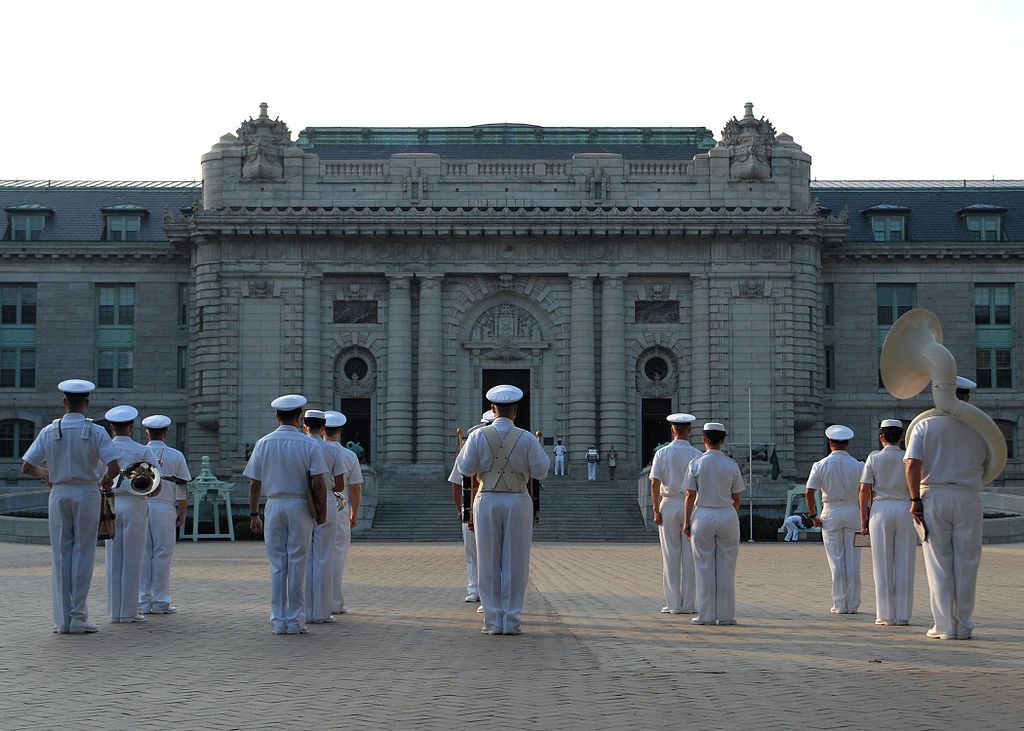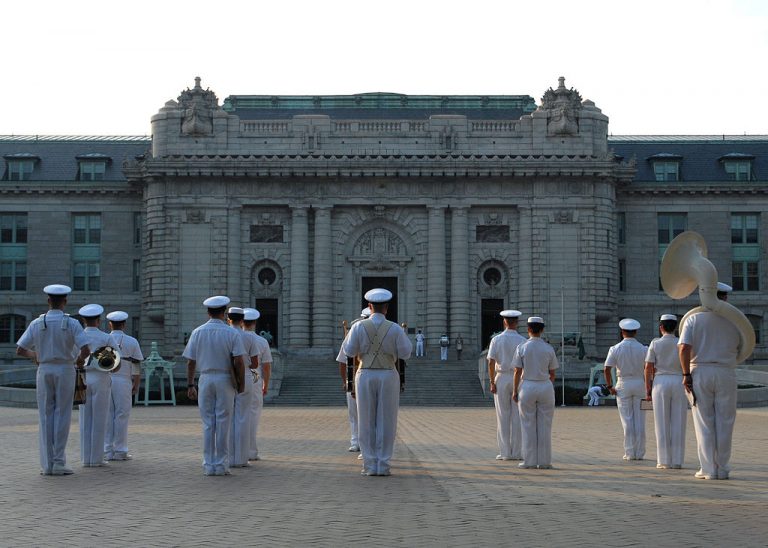
Rear Admiral Edgar Keats, World War II veteran and oldest Naval Academy graduate, dies at 104 | Conservative Angle
Retired Rear Admiral Edgar Keats, a decorated World War II veteran who served in the Pacific and was the Naval Academy's oldest graduate, died of complications of a fall Saturday at Gilchrist Hospice Care, in Maryland. He was 104 and had lived in Guilford and Lutherville. “He was an indomitable...
conservativeangle.com

Rear Admiral Edgar Keats, World War II veteran and oldest Naval Academy graduate, dies at 104
Retired Rear Admiral Edgar Keats, a decorated World War II veteran who served in the Pacific and was the Naval Academy’s oldest graduate, died of
Retired Rear Admiral Edgar Keats, a decorated World War II veteran who served in the Pacific and was the Naval Academy’s oldest graduate, died of complications of a fall Saturday at Gilchrist Hospice Care, in Maryland. He was 104 and had lived in Guilford and Lutherville.

“He was an indomitable man. He was fearless and had the courtly manners of that era. He was such a gentleman,” said a daughter, Suzi Keats Cordish of Lutherville. “He was an unfailing optimist and often said, ‘Things are going to work out.’”
Born in Chicago, he was the son of Maxwell Keats, an advertising executive, and his wife, Clara, a homemaker who volunteered with charities. He was active in the Boy Scouts and achieved the rank of Eagle Scout at age 13. A Chicago Tribune article said he was the youngest Eagle in the area.
An Illinois congressman, Morton Hull, conducted an examination for candidates to the Naval Academy. Mr. Keats took the test, placed highest and at age 16 won his appointment to Annapolis. He entered the military academy in June 1931 as a member of the class of 1935. He won the Academy’s history prize awarded at his graduation.
His family said that Mr. Keats was an accomplished record keeper and kept autobiographical notes. In that autobiography, he wrote of his service as an aviator flying dive bombers from aircraft carriers.
“In 1941, he was ordered to the Navy’s Postgraduate School, located on the grounds of the Naval Academy, where he was one of two selected for the Aviation Ordnance course,” he wrote.
But it was not all about flying. “It was there, in March 1942, that he met Ruth Ellen James of Wilmington, N.C. They were married by Navy Chaplain Thomas Rafferty at the Mayflower Hotel in Washington, D.C., on December 30, 1942.”
He was assigned to the Pacific in November 1943 as chief staff officer and air commander in preparation for the Battle of Tarawa Atoll in the Gilbert Islands.
He recalled in his life story that he landed during the Tarawa battle at dawn on D plus one. An Associated Press photographer took a photo of him and two others that was published under the heading “First scenes from our newest battle front.”
As part of his duties he planned the air attack portion of amphibious landings in the Pacific at Saipan, Iwo Jima and Okinawa.
He was awarded the Legion of Merit medal with a combat citation for his service during World War II. He was later named a rear admiral.
In peacetime, he was named head of armament development in the Navy’s Bureau of Aeronautics and was sent to the Massachusetts Institute of Technology, where he received a master’s degree in aeronautical engineering. He later commanded a dive bomber squadron and was promoted to Air Group Commander of an early Pacific jet air group.
In his autobiography, he recalled how he was catapulted from an early jet, a Grumman Panther, off the carrier Shangri-La and landed the plane on its straight deck. He returned to Maryland as the armament director of the Naval Air Test Center on the Patuxent River.
After retiring from the Navy in 1958, he settled in Severna Park, built a home and managed radio tracking systems for Polaris submarines for the Westinghouse Electronics Division. He lectured widely on the use of satellites in remote areas. He also worked at the Urban Systems Development Corporation to construct military barracks and family housing.
He went on to become president at Standard Dredging Corporation in Baltimore. He worked with dredges in the Persian Gulf, where they deepened harbors and made new land for Iraq, Bahrain, Saudi Arabia and Iran.
Mr. Keats remained active and drove a car until he was 102. He won gold medals at Maryland Senior Olympics in the 70s, 75s, and 80s age groups in the race-walking category.
Mr. Keats was awarded the National Outstanding Eagle Scout Award from the Eagle Scouts of America at a ceremony at the Greenspring Valley Hunt Club. Until about 10 years ago he taught “World War in the Pacific” and “America in the Last Quarter of the Eighteenth Century” at the Johns Hopkins University, Towson University and Baltimore County Community College.
He participated in the Naval Academy retirement community and chaired six Class of 1935 reunions. He wrote a column for Shipmate, the alumni magazine.
When he turned 100, 4,000 midshipmen sang “Happy Birthday” to him at an Annapolis ceremony.
“‘I’ve never smoked. I drank very little, except when I was a young aviator — we all drank, but I gave it up long ago,’” Mr. Keats said in a 2015 Sun article about his birthday celebration. “‘I eat sensibly and I exercise faithfully. Whether that made it, or just good luck, I don’t know.’ Then, with a smile and a wink, he added, ‘I put my money on luck.’”
On his 104th birthday earlier this year, the Naval Academy Alumni Association honored him once again.
His daughter, Suzi Keats Cordish, described her father as a voracious reader who went through three books a week until several weeks ago when he had his injury.
“He was a scholar who was interested in the forming of this country and its constitutional history. He studied it. It fueled his patriotism,” she said.
His wife of 59 years, an artist, died in 2001.
A life celebration is being planned for March 9.
In addition to his daughter, survivors include another daughter, Ellen Keats Stifler of Baltimore; six grandchildren; 12 great-grandchildren; and his longtime companion, Sara Carlton of Baltimore.
